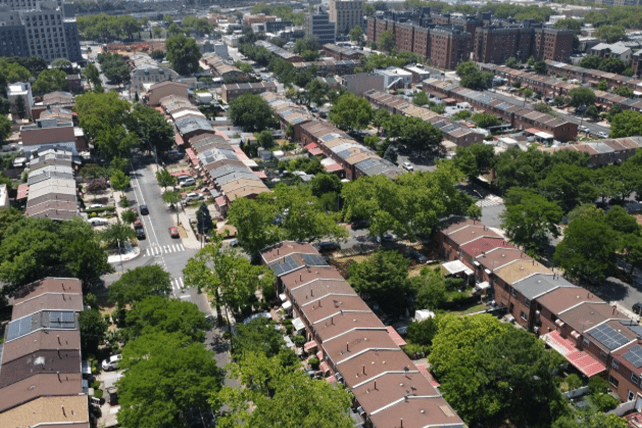When it comes to anything housing related, churches can find it challenging to navigate the city’s complex housing preservation and development procedures to open private-owned land to housing development.
“Sometimes, because of the lack of technical expertise of churches, they don’t get into the pipeline, or they’re at the back end of the pipeline,” said Brawley. “The city ought to really work to alleviate some of the red tape so that congregations can build.”
The Uniform Land Use Review Procedure process is inherently long, pointed out Council Member Crystal Hudson, who represents the Brooklyn neighborhoods of Crown Heights, Prospect Heights, Clinton Hill and Fort Greene. But for faith-based organizations and houses of worship that often lack appropriate counseling, it can be even more complicated.
“A lot of them are land-rich and cash-poor. They have assets, they have the property, but they don’t necessarily have the cash to always pay all of the consultants and withstand the two-year-plus process. I think that’s probably one of the biggest challenges with the ULURP,” said Hudson, who sits on the City Council Committee on Housing and Buildings.
In December, the City Council approved The City of Yes for Housing Opportunity text amendment that aims to simplify “overly restrictive zoning rules,” recognizing previous rules discouraged some organizations from building housing on their properties.
The new text would allow faith-based organizations to convert convents, school buildings and other properties into housing, according to the DCP website. It would also facilitate the development of three- to five-story buildings in low-density areas close to transportation or on a commercial street.
As part of the City of Yes for Housing Opportunity, the City Council also approved a $5 billion investment toward affordable housing, homeownership, tenant protection and neighborhood infrastructure. The City for All Housing plan, approved in November, includes a $1 million investment to finance technical assistance for faith-based and community-based organizations in their plans to build housing on their land.
Casey Berkowitz, a DCP spokesperson, said feedback from community members, including faith-based organizations, on their difficulties navigating the overly complicated procedure helped reshape the process.
“Part of that was based on input from faith-based organizations who sought to build affordable housing and were running into various challenges, frequently in zoning,” said Berkowitz. “They’re extremely valued partners of ours, who obviously have a trusted role to play in the community.”
St. Paul’s recent efforts to support affordable housing projects in the city align with the church’s long history of housing advocacy in the neighborhood. The congregation was created in 1927 by 15 Black Americans who settled in East New York after fleeing the Jim Crow South during the Great Migration. They felt a calling to strengthen the community and wanted it reflected in the congregation’s name. Besides its spiritual mission, St. Paul Community Baptist Church believes it has a mandate to impact the East New York community, said Brawley. The church is known in the neighborhood for its advocacy work against firearms, its success in creating a charter school and its campaigns to clean local supermarkets.
“We understand that to be in our DNA. It’s a part of our identity. We see our role as doing the work of social justice, not as an addendum to our mission, but it’s actually at the core of our identity,” said the reverend, pointing to a 40-year-old project he sees as a model for St. Paul Community Baptist’s new affordable housing efforts.

